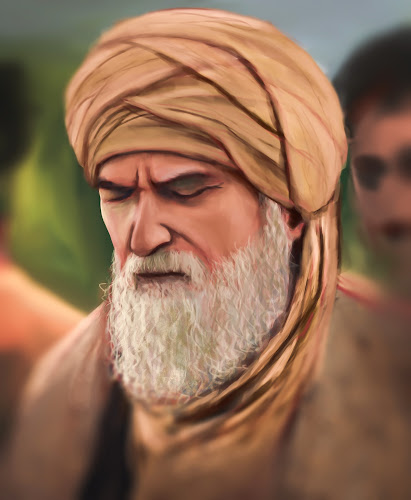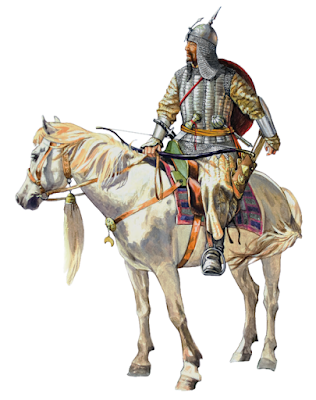Sultan Alauddin Kaikobad ( Kayqobad ) - I [
1188–1237 ]
Biography
Family
Architectural and cultural legacy
 Shipyard |
 |
| Hisn Mansoor Castle ☞ Please Subscribe to our Channel: (History Videos ) |
 Shipyard |
 |
| Hisn Mansoor Castle ☞ Please Subscribe to our Channel: (History Videos ) |
Baiju was a second-in-command of Chormaqan and took part in an attack on Jalal ad-Din Mangoberdi ( Khwarzam Shah) near Isfahan (Iran) in 1228. After Chormaqan's paralysis in 1241 Baiju took over his troops and became a tümen commander by appointment of Ögedei Khan. After Ögedei's death, Baiju started to took orders from Batu, former's nephew. Baiju immediately moved against the Seljuk Sultanate of Rûm, weakening its power at the Battle of Köse Dağ on 26 June 1243. After this battle, the Sultanate became a vassal state of the Mongol Empire and was forced to release David VII Ulu. Baiju demanded the submission of Principality of Antioch too in 1244. He made a raid on Abbasid Caliphate in 1245. He also led Mongol tumens to raid Syria in 1246.
He received ambassadors from Pope Innocent IV in 1247. Embassy was headed by Ascelin of Lombardy and found him at Sisian, on 24 May 1247. Embassy's disrespect and Ascelin's refusal to triple genuflection angered Baiju, he insulted the pope and demanded his submission as well. Ascelin left for Rome on 24 July 1247. Meanwhile he was replaced by new khagan Güyük with Eljigidei. His next two attempts to invade the Abbasid Caliphate in Iraq met less success in 1249-50. He again rose to prominence as Eljigidei and his entire family were purged by Batu for his opposition to election of Möngke Khan in 1251.
Under Baiju in the 1240s and 1250s, the Mongols retained their power in what is roughly modern-day Iran, and tolerated the independence of the Sultanate, Georgia, and petty states in Iran as clients, interfering with dynastic succession and extracting tribute militarily as necessary However, the Abbasids in Baghdad and the Assassins in the Elbruz mountains maintained their independence until the coming of Hülegü, Möngke's brother, in 1255. Baiju was supposedly reproached by Hulegu for failing to extend Mongol power further, and, indeed, was replaced by him as supreme commander as early as 1255, but served under him ably in further campaigns: against the Sultanate of Rum (to extract tribute and replace the sultan Kaykavus II) in 1256, in the assault on Baghdad in 1258, and in the advance on Syria towards Egypt in September 1259.
It is unclear what happened to Baiju after that: when the Mongol force was heavily depleted by the departure of Hülegü in 1260, the force that remained was commanded by Kitbuqa. According to Rashid al-Din, Baiju was executed by Hülegü Khan due to failing to stop Golden Horde corps fleeing from Persia to Russia and Mamluks. His tümen was given to Chormagan's son, Shiremun. While his son Adak was given a command of mingghan by Hulagu.
 |
| Ibn Arabi |
If the believer understood the meaning of the saying “the colour of the water is the colour of the receptacle”, he would admit the validity of all beliefs and he would recognise God in every form and every object of faith. Ibn Arabi: Fusus al-hikam
#IbnArabi, #DirilisErtugrul, #RealHistory, #ErtugrulGhazi, #IbnArabiChest
[for more History please watch the video on History Videos ].
 |
| Artuk Bey History |
Known as Ertugrul Bey’s right hand man in the TV series, but there is so much more to his story! Artuk Bey (also known as “Son of Eksük” or Ibn Eksuk) was a Turkish General of the Great Seljuk Empire in the 11th century. He was the Seljuk governor of Jerusalem between 1085–1091. Artuk Bey lived in Qüddus up to his death in 1091.
Artuk Bey was one of the commanders of the Great Seljuk Empire army during the Battle of Manzikert in 1071. After the battle, he took part in the conquest of Anatolia on behalf of the Seljuk Empire. He captured the Yeşilırmak valley in 1074. He also served the sultan by quashing a rebellion in 1077.
His next mission was a campaign to capture Amid (modern Diyarbakır) from the Marwanids. In this campaign he quarrelled with the Commander in Chief Fahrüddevlet who tended to make peace with Marwanids. In a surprise attack he defeated reinforcements to Marwanids. However, when the Sultan Malik Shah I heard about the event he suspected Artuk Bey of dissension.
 |
| Artuk Bey |
Artuk Bey left the battle field and attended to Tutush I who was Malik Shah’s discordant younger brother in Syria in 1084. In 1086 he was instrumental in defeating Süleyman, the sultan of Seljuks of Turkey in a battle between Süleyman and Tutush.
The Beylik of Artukids was named after him, founded 11 years after his death by his sons. His valiant sons are El Gazi ibn Artuk who battled Baldwin II of Edessa at the Battle of Hab, Syria (1119) but lost and Soqman ibn Artuk, the ally of the hot tempered Tugtekin Bey, The Governor of Damascus against the Crusaders in 1104 at the Battle of Harran near Raqqa.
 |
On this battle the Seljuk Army finally captured Crusader Knights Baldwin Il of Edessa who called himself, King of Tripoli and Jerusalem and Joscelin of Courtenay who called himself Prince of Galilee. Although, they managed to escape later. Soqman ibn Artuk become famous and a true honour to the late Artuk Bey.
Artuk Bey Complete Biography (in URDU / Hindi )
☞ Please Subscribe to Channel: (History Videos )